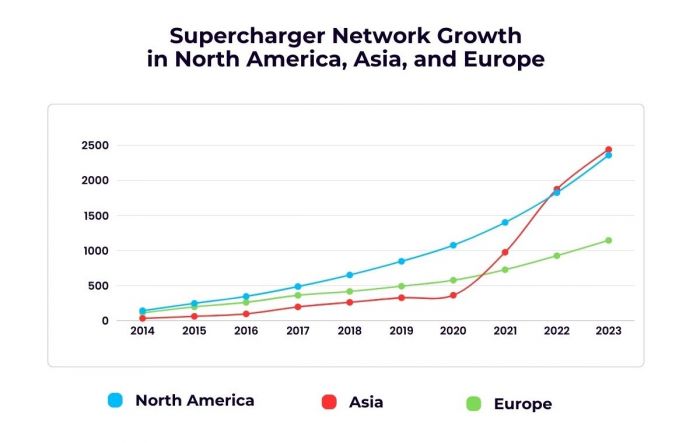Are you tempted to buy a car with the Ford 3.0L Power Stroke engine under the hood but worried about its power, longevity, and mechanical challenges? This article will help you make up your mind by supplying all the relevant information. Read on to learn more about this unique V6 engine.
Ford introduced the V6 3.0L Power Stroke diesel engine in the Ford-150 pickup in 2018. The demand for this engine was created by diesel fans who do not need the larger 6.7 Power Stroke available in the F250 and F350 versions. If you are looking for an engine that offers sufficient power, economical fuel consumption, and durability, look no further than the Ford 3.0L engine.
.jpg)
Key features and my opinion about the engine
- Production years:2018-2021
- Average lifespan of 3.0 Power Stroke:180,000-220,000 miles
- Fuel supply type:Common Rail
- Power range:250 hp
- Fuel efficiency:good
- Engine block material:cast-iron
- Engine reliability score:medium
- The most common problems:EGR problems, coolant leaks, oil consumption, DPF issues, problems with electronics.
The Ford 3.0L Power Stroke Engine Specs
The 3.0L Power Stroke engine is not to be underestimated. Its specifications present it as a solid diesel engine. It offers up to 250hp and a torque of about 440 lb-ft. The V6 turbo engine comes equipped with two turbochargers and a high-pressure fuel injection system.
The 3.0L turbo diesel engine block is similar to the 6.7L Power Stroke modeled after because it is made of light compacted graphite iron (CGI). The use of CGI in the engine's design ensures the engine maintains a dry weight of about 500lbs.
The temperature is lowered in the engine by the piston oil jets responsible for spraying oil underneath each piston, thus promoting additional durability. The bottom of the engine block is fitted with a die-cast structural oil pan. It is rigid and effective in controlling noise operation. The F-150 is an excellent example of the power and economical consumption of the 3.0L engine.
This truck consumes a measly gallon for every thirty miles of travel. It is capable of towing a maximum of 11,400 pounds. This ability is pretty impressive for a light-duty truck. All diesel engines have many advantages because of their low-end torque - the 3.0L is no different. The car comes with a displacement of 2,993cc that is turbocharged. The bore / stroke is 84mm / 90mm and the engine has a compression ratio of 16.0:1.
These specifications guarantee that your 3.0L engine will have a much easier time dealing with heavy loads. Even though gasoline engines in F-150 are said to live longer than diesel ones, you will not regret choosing the 3.0L engine. It is a good option for diesel enthusiasts who want to compromise on consumption but not power or durability.
How to Increase Longevity of your Ford 3.0L Engine
With the right care, your Ford 3.0L will run for an average of 220,000 miles before requiring any serious repair. Once your engine reaches this mileage, there are several reasons it could require a major repair. Experts recommend that drivers plan to replace their 3.0L engines at this mileage because it is economically infeasible to continue operating the car otherwise
You can increase the longevity of your Ford 3.0L Power Stroke engine by following these handy tips:
- Keeping up with your recommended servicing appointments - drivers who do not get quality oil and regular changes are likely to experience failure as early as 100,000 miles.
- Visiting well-experienced and qualified Ford auto repair experts
- Purchasing authentic OEM spare parts compatible with all components of your engine
- Careful driving that maintains the 2000 RPM range - fast and active driving increase's your 3.0L's RPMs and reduces its lifespan.
- Constantly monitor your coolant to avoid overheating
Frequent 3.0 Power Stroke Problems
The Ford 3.0L is new to the market, and most of the problems presented are speculative. Owners have only had four years to love and care for their 3.0L engines. Therefore, feedback is still in the development stage. Below are a few common problems that owners of the 3.0-liter Power Stroke engine have reported so far:
- Crankshaft bearings
- EGT sensor
- EGR
- DPF
Crankshaft Bearings Problems in the 3.0L Power Stroke Engine
While this problem is not yet commonly reported in the 3.0L engine, it is worth mentioning because previous versions used to run into the premature failure of the crankshaft bearing. Although Ford ensured that it updated the bearings and crankshaft of the 3.0L engine to correct the problems previously reported, most owners are anxious that the issue could reappear.
The crankshaft bearing is also known as the main engine bearing. The backbone enables your engine to perform its primary function - converting linear motion into rotational. It will be subjected to dynamic loads during its lifespan and must be tough enough to hold up for the time specified in your manual.
Most owners are aware that the crankshaft bearing problems do not manifest until your car has racked up an impressive mileage. As your 3.0L engine ages, paying more attention to your crankshaft bearing is advisable to avoid failure. A crankshaft failure is an expensive problem to repair and, if not detected early, could necessitate a replacement of the crankshaft. Where the failure is critical, it may result in complete engine loss.
If your 3.0L engine is developing crankshaft issues, you are likely to notice the following symptoms:
- Your engine light is illuminated
- Your car is stalling or hard starting
- Your engine is misfiring or running rough
- Your fuel consumption has increased
EGR Problems Associated with the Ford 3.0 Power Stroke Engine
The EGR systems generally are prone to problems on most modern diesel engines. Some Ford models with the 3.0L Power Stroke engine have a known issue with the screws in the exhaust gas recirculation (EGR) by-pass valve flap. Ford recalled the affected models and fixed the issue, so the problem should not be common.
Your 3.0L V6 diesel engine may face EGR issues due to carbon deposits accumulating and clogging the EGR cooler core. It is advisable to clean and replace your EGR regularly to ensure it does not clog completely and compel you to replace it. Should you experience challenges with your EGR system, contact your dealer to find out whether you qualify for a free replacement.
Symptoms of a Clogged up EGR Filter of the 3.0 Power Stroke Engine
Whenever your 3.0L engine begins to show the following symptoms, a clogged EGR filter is likely to blame:
- White smoke or steam pouring out of your exhaust
- Wet patch on your parking spot due to coolant leakage
- Low coolant levels without noticeable leaks
- Overheating due to failure to cool hot exhaust fumes
- Fault code P0401
- Illuminated check engine light
Ford 3.0L Power Stroke EGR Cooler Replacement
EGR delete is a common topic in the world of turbo diesel. Some owners choose to delete the EGR system up-front. Others wait until as soon as it shows signs of failure, then decide to take it off. When you take out the EGR systems, there is a concern about the emission levels. This, however, is an affordable solution that prevents the issues from popping up. The Ford 3.0L Power Stroke engine EGR kits go for less than $200 and about $150+ for labor if you take it to your mechanic.
EGT Sensor Failure for The Ford 3.0L Power Stroke Engine
The exhaust gas temperature (EGT) sensor problems are commonly associated with many larger V8 Power Stroke engines. This type of problem is not yet common among the 3.0L engine. Rather, it is suspected to occur more often as the F-150 model ages with time. The 3.0L diesel engine comes with several sensors, and the EGT sensor failures are minimal in general. They are easy to locate as they are situated along the exhaust. It is not expensive to replace the EGT sensors of the 3.0L Power Stroke engine.
Symptoms of the EGT Sensors Failure for the 3.0L Diesel Engine
Below are some of the common symptoms that are associated with your car's EGT sensor failure on the Ford 3.0L Power Stroke engine;
- Fault codes
- Fail emission testing
- Check engine light
Whenever your car's EGT sensors fail, the PCM should be able to pick it up on the fault. This, in turn, triggers a fault code (DTC) and a check engine light that indicates there is an issue associated with an EGT sensor. The typical codes you should look for are; P0544, 2033, P2084, P242D, P2471, P2031, P2032, and P242A. An issue with your EGT sensor may lead to failing an emission test.
EGT Sensor Replacement for the Ford 3.0L Power Stroke Engine
The general cost of replacing your damaged EGT sensors is relatively cheap and easy to access. Replacing time can take up to 30 minutes of DIY. The sensors are inexpensive, thus an easy problem to rectify.
DPF problems that develop over time
When the mileage of your 3.0L Power Stroke is high enough, you will inevitably see the DPF problems. You can also delete it with any available DPF delete kit, but remember that the next fog test will send you to the repair shop to do something with the emissions. So, cleaning the DPF and replacing it if necessary are the most proper solutions for this problem.
Final words
Your Ford 3.0L engine is powerful enough to handle your day-to-day demands without breaking a sweat. All you need to do is care for it as recommended in your manual and drive until you reach the mileage limit.
About the authors
The CarAraC research team is composed of seasoned auto mechanics and automotive industry professionals, including individuals with advanced degrees and certifications in their field. Our team members boast prestigious credentials, reflecting their extensive knowledge and skills. These qualifications include: IMI: Institute of the Motor Industry, ASE-Certified Master Automobile Technicians; Coventry University, Graduate of MA in Automotive Journalism; Politecnico di Torino, Italy, MS Automotive Engineering; Ss. Cyril and Methodius University in Skopje, Mechanical University in Skopje; TOC Automotive College; DHA Suffa University, Department of Mechanical Engineering






Add comment